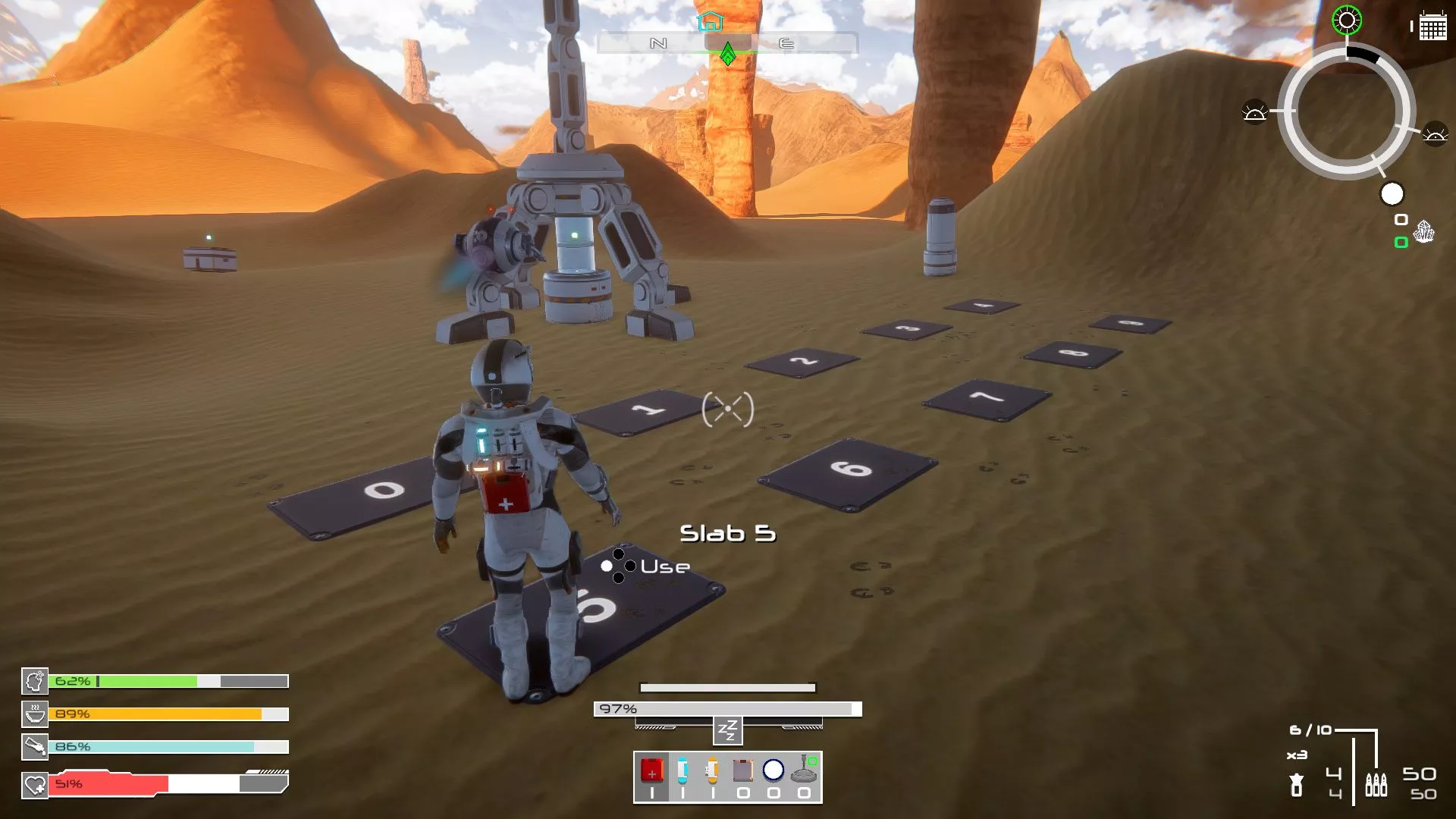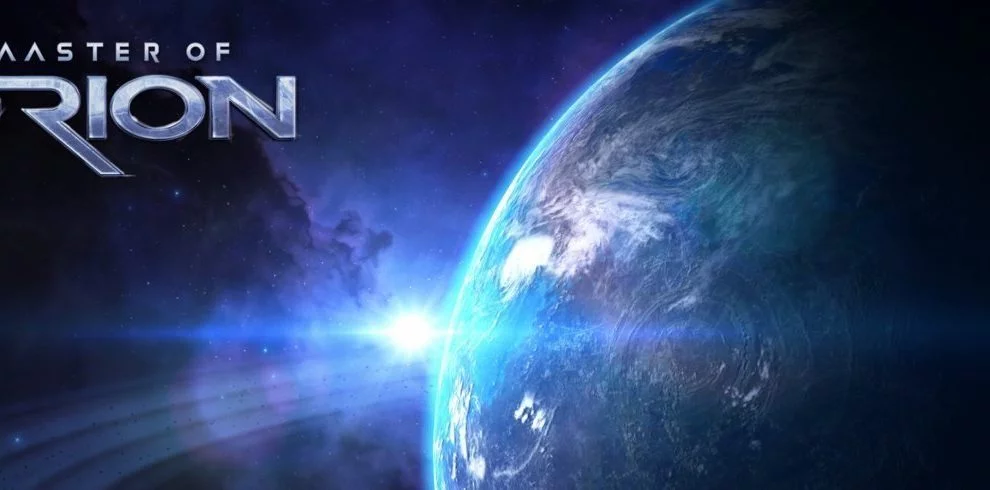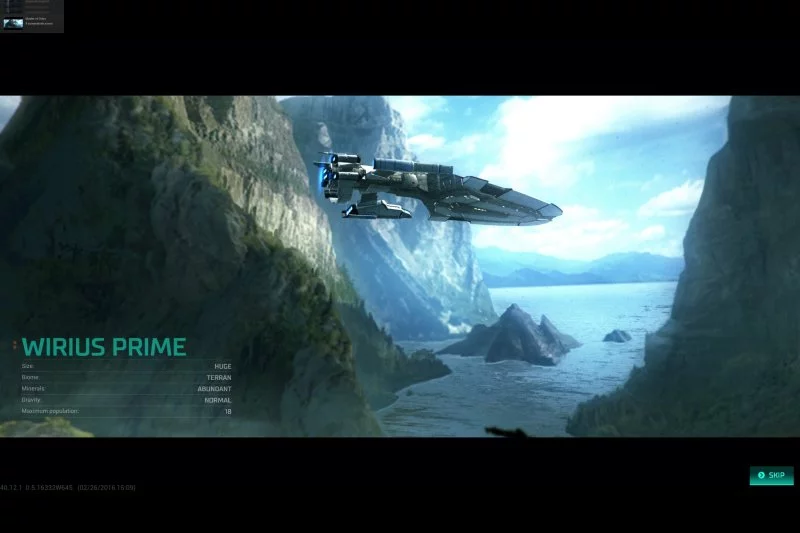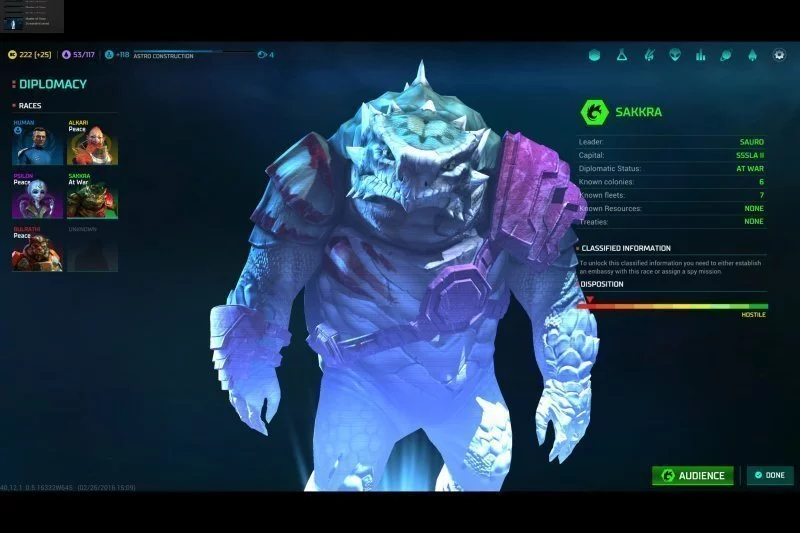I’ll be honest: seeing Master of Orion at a bunch of hands-off sessions made me terrified of it.
A 4X game — explore, expand, exploit, and exterminate — with a desire to head back to the franchise’s roots, Master of Orion fully embraced the idea that it needed to be bone-crushingly hard. Or so I was told. Truth be known, Master of Orion is manageable, yet strangely, it’s borderline inaccessible at the same time. Thankfully, it’s still incredibly fun all the while.
Now in Early Access to those who pre-order, Wargaming’s first foray into non-World of games comes with six playable races and three victory conditions. I spent four games — and 2,000 individual turns — playing as the Human race to give ’em all a run for their money. Why? ‘Cause I wanted to be like the United Federation of Planets, of course. Sue me.
My first go around, things were a bit overwhelming. A tutorial system does a fairly decent job of walking you though game mechanics, but ultimately, the intricate minutiae are left to you do figure out. Or not; I opted initially to use auto-build queues for my colonies alongside the “Balanced” setting when it came to organising food and other resources. That move left me free to figure out what to do.
I decided, in true UFP style, to embark on a mission of peace and exploration. I made tons of colony and scout ships and set forth into the galaxy. There, I met the races of MoO — and immediately likened them to other properties.
The Bulrathi and Sakkra are the Klingons of the group. The Psilons, slightly creepy mini-versions of XCOM’s Sectoids. The cat-like Mrrshan are essentially catty versions of the Romulans, pun intended, while the Alkari are less-logical Vulcans. After this exercise — coupled with choosing the Human race — I realised I was heavily xenophobic. Oops.
I colonised planets like a little rabbit, growing humanity and our galactic power in the process. Races immediately popped over to my sectors and asked for trade agreements, embassies and more. Things were going swimmingly… or so I thought. Despite what I considered to be amazing, continual relations between each race, they all ended up hating me around 75 turns later. Without any real explanation that I could discern, I must stress. I endeavoured to fix that, but to no avail. I also was determined to sort that in future games, though that never happened either. I was non-aggressive, I followed requests to keep my colonies away from homeworlds and I limited contact with those who declared war on another ally. As far as I could tell, it didn’t matter what I did in the end.
Eventually, I lost that first game as one race rose to power and used its military might to mow through the rest of the galaxy’s inhabitants. At the very least, I was able to realise my error; I foolishly went into full UFP mode, researching sciences and technology that would benefit my colonies rather than establishing any sense of security.
In my second game, I kept my UFP mindset, but ensured I could defend myself if necessary. Scout ships paved way for Frigates; those were discontinued for Battleships and those, in turn, for Titans.
Titans, man. The thought of those powerful ships sends chills down my spine. Especially ’cause I jumped into the ship editor and made them of my own aesthetic inclinations.
Anyways, my fellow races — who were coming more predictable as each turn passed — basically acted in the same way as my first game. The Sakkra tried putting pressure on the Bulrathi, and they erupted into war. That spilled over into one of my systems, and my Titans easily dispatched the threat. The problem, then, was that other races decided I’d acted too harshly and turned even more against me. As before, I had no idea — and no direction — to fix that issue. In the end, the Bulrathi took victory through diplomatic means, being voted as leaders of the Galactic Senate to combat the human threat.
In my fourth and final full 500-turn playthrough, I put my lessons to good use. I acted as balanced as possible, even to the point of that aforementioned xenophobia, keeping to myself and minding own business. I managed to pick up a win through having the most points at the end of a full 500 turns. Needless to say, that victory by default wasn’t really as satisfying as I was hoping for.
Despite being let down by my hollow victory, I never regretted a minute of the three days I was glued to my PC. I ate playing Master of Orion. I might have taken MoO into the toilet once or twice too. Its gameplay loop means you’ll be able to have an entirely different experience with each playthrough — despite somewhat single-minded races — and a new story to tell with each run. If you’re into the genre or looking for a potential time-sink, jump on in.
Master of Orion, was reviewed with an Early Access-turned-retail code on Windows PC (via Steam), as provided by its publisher.
Review: Master of Orion
 |
|
The good
|
The bad
|
Want to know more about our scoring scale?
This article may contain affiliate links, meaning we could earn a small commission if you click-through and make a purchase. Stevivor is an independent outlet and our journalism is in no way influenced by any advertiser or commercial initiative.


























